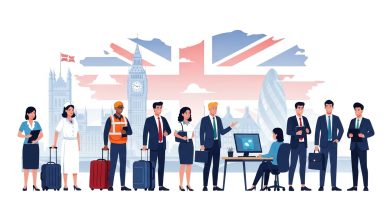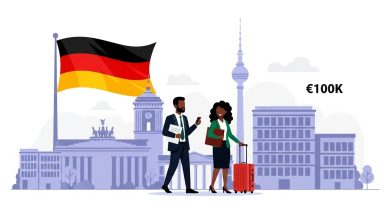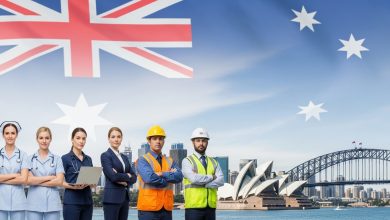The $15,000 Visa Question: A New Rule for Visitors, Not a Sponsorship Opportunity
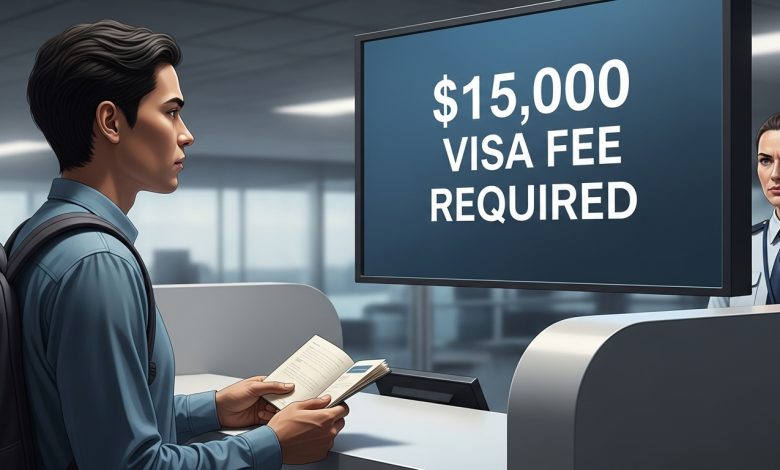
The $15,000 Visa Question: A New Rule for Visitors, Not a Sponsorship Opportunity
Imagine saving for years for a chance to visit the United States—for a business conference, a family wedding, or to see its famous landmarks. You’ve filled out the forms, prepared for your interview, and then you hear the news: your visa is approved, but on one condition. You must first post a cash bond of $5,000, $10,000, or even $15,000 to set foot in the country.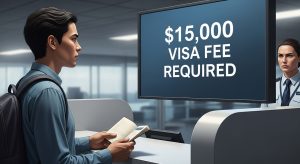
This isn’t a hypothetical scenario. As of August 2025, this is the new reality for certain visitor visa applicants due to a State Department pilot program. Let’s demystify what this really means for you.
What Is the Visa Bond Pilot Program?
Contrary to what the “$15,000” figure might suggest, this is not a scholarship or a sponsorship fund you can apply for. It is a financial security deposit required for the issuance of a B-1 (business) or B-2 (tourism) visa.
-
Purpose: The stated goal is to reduce the number of visitors who overstay their visas. The bond acts as a strong financial incentive to ensure travelers comply with the terms of their visa and leave the U.S. on time.
-
How it Works: If a traveler subject to the bond complies with all visa conditions and does not overstay, they are entitled to a full refund of the bond amount. However, if they violate the terms, they forfeit the entire sum.
-
Who is Affected? The program targets applicants from countries identified as having high visa overstay rates and deficient document security. The State Department has announced that the program will initially apply to visa applicants from Malawi and Zambia. The list of countries can be amended throughout the program’s duration.
The program is set to run for 12 months, and visa applicants from the affected countries will be required to arrive and depart from specific designated airports in the U.S., such as JFK in New York or Dulles in Washington, D.C..
Your Actual Pathway to the U.S.: Employment-Based Visas
While the visa bond is a significant development for some visitors, it does not change the established pathways for those seeking to work in the United States. The U.S. system offers several avenues for foreign professionals, which are fundamentally different from the visitor visa bond.
The table below summarizes the most common employment-based visa categories:
| Visa Category | Description | Who It’s For |
|---|---|---|
| EB-1: Priority Workers | For individuals with extraordinary ability, outstanding professors/researchers, or multinational executives/managers. | Top-tier talents in their fields; often does not require a labor certification. |
| EB-2: Advanced Degree Professionals | For members of professions holding advanced degrees (beyond a baccalaureate) or persons with exceptional ability. | Professionals with a master’s degree or higher, or those with a bachelor’s degree and at least five years of progressive experience. |
| EB-3: Skilled Workers & Professionals | For professionals with a bachelor’s degree, skilled workers with at least two years of training/experience, and unskilled workers. | A broader category for degreed professionals, skilled tradespeople, and other workers. |
The Real “Sponsorship” Process
The term “visa sponsorship” simply means that a U.S. employer is willing to go through the legal process to hire you. This typically involves several key steps:
-
Labor Certification: In most cases, the employer must first obtain a certified Labor Certification from the U.S. Department of Labor. This process proves that there are no qualified U.S. workers available for the position.
-
Form I-140 Petition: The employer then files an Immigrant Petition for Alien Worker (Form I-140) with U.S. Citizenship and Immigration Services (USCIS) on your behalf.
-
The Visa Bulletin: Due to high demand, there are annual numerical limits on these visas. The Visa Bulletin, published monthly by the State Department, dictates when you can apply based on your “priority date” (the date your labor certification was filed). For applicants from countries with high demand, like India and China, there can be significant waiting periods.
How to Navigate Your American Dream
So, how do you position yourself for a real U.S. work opportunity?
-
Focus on Your Skills, Not a Mythical Grant: Invest in your education and build a strong, specialized skill set that is in demand. The U.S. job market highly values expertise in STEM fields, healthcare, and other specialized professions.
-
Find an Employer, Not a Sponsor: Actively search for U.S. companies that have a history of hiring international talent. Websites like MyVisaJobs can be a resource to identify such employers.
-
Be Patient and Meticulous: The immigration process is complex and often lengthy. Ensure every form is filled out accurately and every requirement is met. Mistakes can lead to costly delays or denials.
The dream of working in America is alive and well, but it is built on the solid foundation of your skills, a willing employer, and a thorough understanding of the legal process. By focusing on the real pathways and ignoring misleading headlines, you can turn that dream into a achievable plan.
I hope this detailed explanation helps clarify the U.S. visa landscape. Would you like me to elaborate on any specific employment-based visa category?
